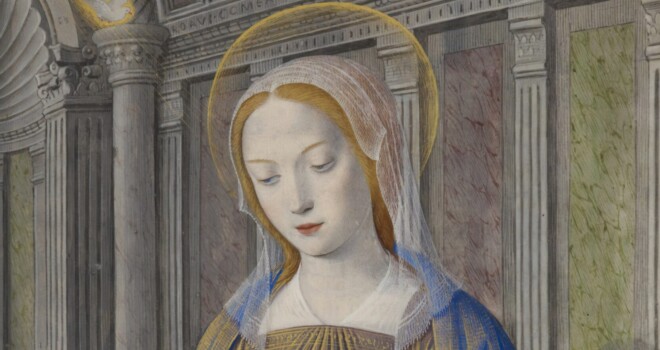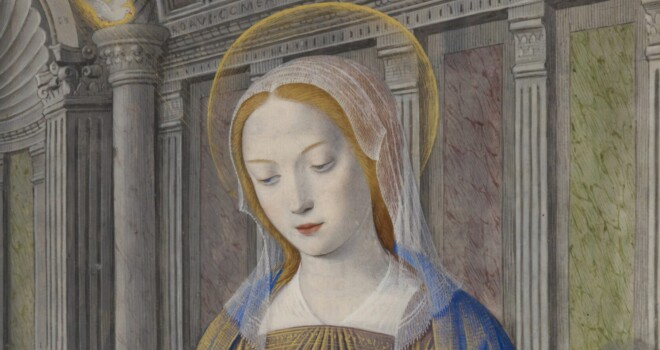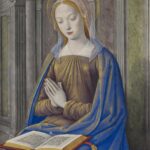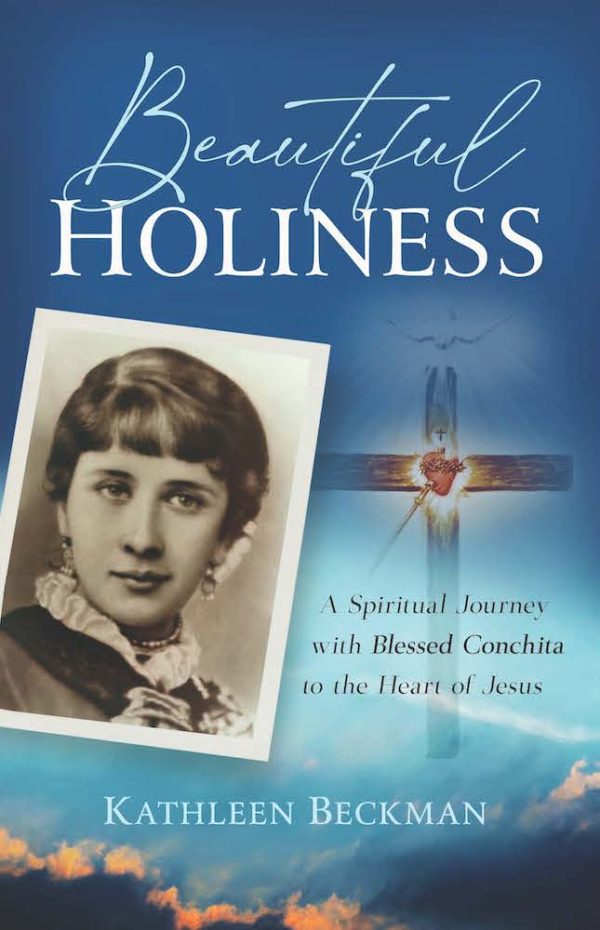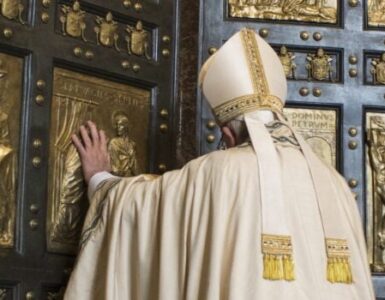As the universal Church celebrates the Solemnity of the Annunciation on March 25, we are liturgically led to ponder the gift, beauty, and mission of the Blessed Virgin Mary. Her yes to God’s plan for the Incarnation was intimately personal to Mary and infinitely universal to the Church.
Mary deigned to receive the message of the Angel. She pondered without fully comprehending the invitation. She gracefully responded, “Behold, I am the handmaid of the Lord. May it be done to me according to your word (Luke 1:38).” These words welled up from the depths of her soul steeped in the contemplation of God’s Word. She meditated on the Jewish scriptures. She believed and prayed for God’s intervention for the promised Messiah. While God looked with favor on Mary’s lowliness, she looked only at Him who was calling her to arise to mission.
Mary’s role in salvation history is to physically birth Jesus Christ into the world. And until the end of time, Mary has the maternal mission of spiritually birthing Christ in souls. She and the Holy Spirit are the only two artisans who can birth Jesus in souls according to Servant of God Archbishop Luis Martinez.
In researching for my book on the life and spirituality of Blessed Conchita Cabrera, an ordinary wife and mother who developed into one of the Church’s the foremost mystics, I discovered her Marian character. Blessed Conchita can help us to move from devotion to Mary to imitation of Mary. This is a necessary development for our spiritual maturity and growth in virtue.
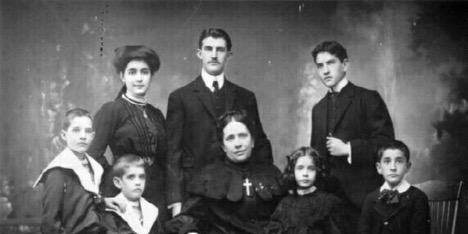
Cardinal Raniero Cantalamessa wrote,
To say that Mary is the mirror of the Church means in practical terms that after having first considered a word, an attitude, or an event in the Madonna’s life, we then ask ourselves what this means for the Church and each one of us. What should we do to practice what the Holy Spirit wished to communicate to us through Mary? The best answer we can give is not devotion to Mary, but imitation of Mary.
In practice, how do we move from devotion to imitation of Mary? Devotion includes our prayers, consecration, affection, and gratitude for Mary — all very important. Imitation includes surrender to God’s will and initiatives. Imitation means that the Marian virtues become embodied in us. Growth in virtue requires discipline and asceticism (sacrifices). Imitation of Mary is a call to participate in Mary’s mission –birth Jesus in the world, carry Jesus within, and bring Him to others.
Jesus spoke to Blessed Conchita regarding souls who love Mary:
In My spiritual life . . . in souls, My Mother was never separated from Me, that is, the imitation of both of our lives must be simultaneous on earth. The souls who love her most and who are most like her, are the souls who are most perfectly like Me. You must imitate her in the practice of the virtues. Observe the virtues she practices in her solitude, in the last stage of her life, her outlook, and her soul wholly turned toward heaven, and her self-effacement glorifying Me on earth. Through her passionate love, aspiring for paradise, she merited graces from heaven for the newborn Church (SD 41, 63; February 18, 1917).
Imitation of Mary means that our hearts will sometimes experience the painful piercing that opens and empties us for transformation into Jesus. Imitation of Mary is a challenging path that produces the greater fruit. Ideally, we practice devotion to and imitation of Mary. Why? Our discipleship is nothing less than the imitation of Christ Jesus. Mary models this more perfectly than all the saints combined. Yet, the saints also provide a school of witnesses to the possibility, promise and necessity of discipleship that yields the beauty of holiness.
There are three Marian titles that identify Conchita’s Marian character: the Virgin of Guadalupe, the Virgin of the Cross, and the Virgin of Solitude. Each title has characteristics related to a particular mission.
The Virgin of Guadalupe appeared as the holy Mother pregnant with Jesus to deliver His people from the Aztecs’ satanic practices and false religion. Mary appeared on Tepeyac Hill as a humble but powerful Mother who has authority from the Triune God. She called the people to conversion and established a sanctuary of hope and healing. The tilma is her enduring love letter to the Americas. Conchita’s entire life was formed by Our Lady of Guadalupe. Spiritual warriors for Christ would do well to study the book that is the Virgin of Guadalupe.
The Virgin of the Cross is a school of co-redemptive suffering love. All Marian virtues engaged on Calvary. Mary’s fiat was magnified, her sorrow, complete. She offered her beloved Jesus to the Father as Victim and Priest. Mary suffered the interior agonies of the Passion. In the mutual gift of the Son, and the co-redeeming gift of Blessed Mother on Calvary, Heaven opened. Blessed Conchita attained union with the Virgin of the Cross during the middle of her life, especially following her vision of the Cross and the mystical incarnation.
The Virgin of Solitude embodies a school of contemplative prayer, silence, sacrifice, and supplication. Mary remained after the Ascension to aid the apostles and to birth the Church through the offering of interior suffering. In solitude, Mary mystically recalled and relived Christ’s life on earth. Conchita was called to live Marian solitude in her later years wherein she became an icon of Love Crucified. The little girl who loved Our Lady matured into a woman who embodied Mary’s life and experienced Mary’s joyful, sorrowful, and glorious mysteries.
Blessed Conchita’s Marian Mysticism and Revelations
In studying Conchita’s Marian horizon, we learn the beauty of Marian mysticism. Jesus spoke to Blessed Conchita about His Mother:
Her Heart is presented with roses, but underneath is found thorns. The roses signify graces for her children, acquired with almost infinite sorrows, with tears and with martyrdoms the weight of which I alone was capable of measuring. It is quite natural for a mother, and so much the more Mary, to keep for herself the thorns and the sorrows: it is the roses and the tenderness that she presents to her children, not the sacrifices (Conchita’s Diary, June 30, 1917).
Another time, Jesus spoke, “I want you to offer yourself as did Mary, with her very virtues and qualities. Imitate her and model your own heart on this so beautiful an image.”
Mary: Teacher of the Spiritual Life
Blessed Conchita recalled these words of Jesus: “The holiest and most perfect creature that ever existed was Mary. Do you know why? Because from the first instant of her being, she corresponded with all the inspirations of the Holy Spirit. Mary is the best teacher of the spiritual life” (Diary, September 22, 1895).
“Because she corresponded with all the inspirations of the Holy Spirit.”
What would we be if we corresponded with all the inspirations of the Holy Spirit? Mary models the spiritual life by her perfect example of life in the Spirit. Mary’s docility to the Holy Spirit is her genius.
Conchita’s Prayer to Our Lady:
O most loving and beloved Mother! . . . Tell Jesus what I need, holy Virgin, so that I may acquire what I lack to resemble His family! And how great it is! You see that I am not humble, not patient, not mortified; that I look for my self-interest in things large and small, and live clinging to earth with my heart full of degrading inclinations. Tell Him that when I draw near the wedding of the Lamb in Communion, I lack love, the beautiful wine of charity. O my beloved Mother, obtain this for me from our Jesus, Grant me this favor, most holy Mother, so that those around me may believe in Him as in Cana, seeing my vices changed into virtues. Amen.
Our Prayer: O Mary of the Annunciation, pray for us – that we may imitate your yes to God without counting the cost. Grant that we do not measure the weight of love, or limit the Almighty by looking at our weakness, but help us to gaze upon the Face of Jesus to know that God looks with favor upon our lowliness and calls us to holiness in Him. Thank you, Mary for your fiat to God born of pure love.
✠
Beautiful Holiness: A Spiritual Journey with Blessed Conchita to the Heart of Jesus is available from Sophia Institute Press.
Photo by British Library on Unsplash


